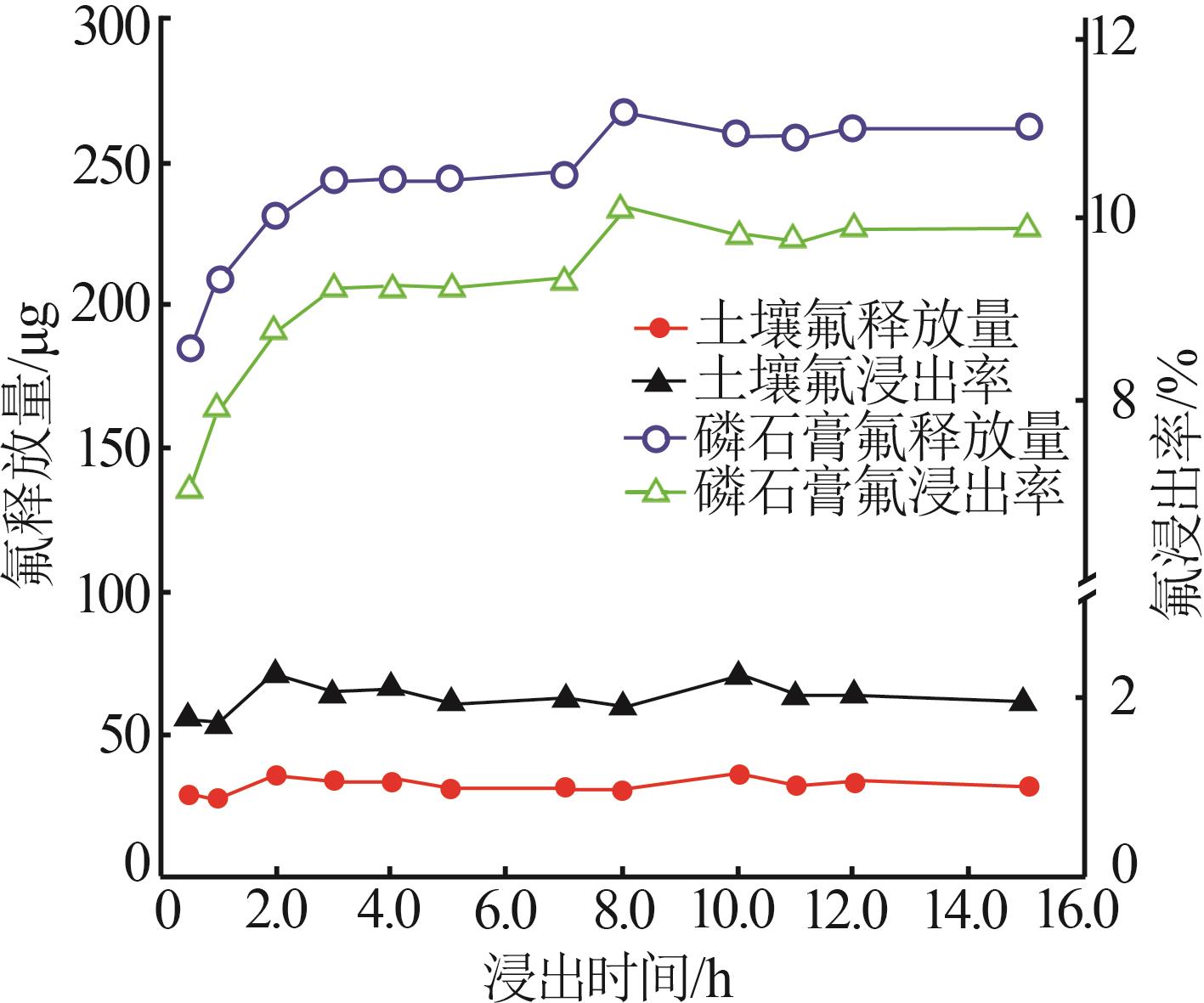| [1] |
WU Fenghui, HE Minjie, QU Guangfei,et al.Highly targeted stabilization and release behavior of hazardous substances in phosphogypsum[J].Minerals Engineering,2022,189:107866.
|
| [2] |
AKFAS F, ELGHALI A, ABOULAICH A,et al.Exploring the potential reuse of phosphogypsum:A waste or a resource?[J].Science of the Total Environment,2024,908:168196.
|
| [3] |
JIA Wenke, LI Jingchao, SHEN Changpan,et al.Research advances in phosphogypsum flotation purification:Current status and prospects[J].Separation and Purification Technology,2025,354:129244.
|
| [4] |
SILVA L F O, OLIVEIRA M L S, CRISSIEN T J,et al.A review on the environmental impact of phosphogypsum and potential health impacts through the release of nanoparticles[J].Chemosphere,2022,286:131513.
|
| [5] |
MURALI G, AZAB M.Recent research in utilization of phosphogypsum as building materials:Review[J].Journal of Materials Research and Technology,2023,25:960-987.
|
| [6] |
WU Fenghui.The treatment of phosphogypsum leachate is more urgent than phosphogypsum[J].Environmental Research,2024,262:119849.
|
| [7] |
GÓRECKI H, CHOJNACKA K, DOBRZAŃSKI Z,et al.The effect of phosphogypsum as the mineral feed additive on fluorine content in eggs and tissues of laying hens[J].Animal Feed Science and Technology,2006,128(1/2):84-95.
|
| [8] |
WANG Mei, LI Xiang, HE Wenyan,et al.Distribution,health risk assessment,and anthropogenic sources of fluoride in farmland soils in phosphate industrial area,southwest China[J].Environmental Pollution,2019,249:423-433.
|
| [9] |
CUI Sifan, FU Yuanzhou, ZHOU Baiqin,et al.Transfer characteristic of fluorine from atmospheric dry deposition,fertilizers,pesticides,and phosphogypsum into soil[J].Chemosphere,2021,278:130432.
|
| [10] |
GAN Chundan, JIA Yanbo, YANG Jinyan.Remediation of fluoride contaminated soil with nano-hydroxyapatite amendment:Response of soil fluoride bioavailability and microbial communiti-es[J].Journal of Hazardous Materials,2021,405:124694.
|
| [11] |
GAN Chundan, CUI Sifan, YANG Jinyan.Foliar application of Ca in alleviation of atmospheric fluoride stress on leafy vegetable and reduction of potential dietary health risk[J].Water,Air,& Soil Pollution,2024,235(9):566.
|
| [12] |
WANG Minghan, WANG Haoyang, LEI Ge,et al.Current progress on fluoride occurrence in the soil environment:Sources,transformation,regulations and remediation[J].Chemosphere,2023,341:139901.
|
| [13] |
YANG Jinyan, WANG Mei, LU Juan,et al.Fluorine in the environment in an endemic fluorosis area in Southwest,China[J].Environmental Research,2020,184:109300.
|
| [14] |
LI Yuan, ZHANG Minghua, MI Wujuan,et al.Spatial distribution of groundwater fluoride and arsenic and its related disease in typical drinking endemic regions[J].Science of The Total Environment,2024,906:167716.
|
| [15] |
ZRELLI R EL, RABAOUI L, ABDA H,et al.Characterization of the role of phosphogypsum foam in the transport of metals and radionuclides in the Southern Mediterranean Sea[J].Journal of Hazardous Materials,2019,363:258-267.
|
| [16] |
CHEN Qiusong, WANG Peishen, WANG Yunmin,et al.Fluorides immobilization through calcium aluminate cement-based backfill:Accessing the detailed leaching characterization under torrential rainfall[J].Environmental Research,2023,238:117229.
|
| [17] |
PENG Weixin, HU Huimin, ZHANG Qiwu,et al.Simultaneous immobilizations of soluble phosphorus and fluorine in phosphogypsum by milling with calcareous and aluminiferous samples:Reaction products and immobilization performances[J].Journal of Cleaner Production,2023,422:138677.
|
| [18] |
李日邦,王丽珍.土壤中氟的淋溶研究[J].地理学报,1992,47(4):376-381.
|
|
LI Ribang, WANG Lizhen.A study on the leaching of fluoride in soil[J].Acta Geographica Sinica,1992,47(4):376-381.
|
| [19] |
WANG Mei, TANG Ya, ANDERSON C W N,et al.Effect of simulated acid rain on fluorine mobility and the bacterial community of phosphogypsum[J].Environmental Science and Pollution Research,2018,25(16):15336-15348.
|
| [20] |
谭善宜,文惠子,何淑玉,等.磷石膏中磷的浸出行为及其动力学研究[J].无机盐工业,2025,57(2):105-112.
|
|
TAN Shanyi, WEN Huizi, HE Shuyu,et al.Study on leaching behavior and kinetics of phosphorus from phosphogypsum[J].Inorganic Chemicals Industry,2025,57(2):105-112.
|
| [21] |
向浩,马梦雨,李昶宜,等.微波辅助酸浸实现磷石膏中稀土元素有效浸出[J].中国有色冶金,2023,52(5):121-127.
|
|
XIANG Hao, MA Mengyu, LI Changyi,et al.Effective leaching of rare earth elements from phosphogypsum by microwave-assisted acid leaching[J].China Nonferrous Metallurgy,2023,52(5):121-127.
|
| [22] |
易建春.成都地区土壤中镉、氟、钾对酸雨淋滤的敏感性研究[D].成都:成都理工大学,2007.
|
|
YI Jianchun.The research on the sensitivity of the acid rain leaching to the Cd,F and K in soil of Chengdu[D].Chengdu:Chengdu University of Technology,2007.
|
| [23] |
董万强,邓祥意,张秋桐,等.氧化钙对磷石膏中可溶磷和可溶氟固化性能的影响[J].武汉工程大学学报,2023,45(6):620-627.
|
|
DONG Wanqiang, DENG Xiangyi, ZHANG Qiutong,et al.Effect of calcium oxide on solidification properties of soluble phosphorus and soluble fluorine in phosphogypsum[J].Journal of Wuhan Institute of Technology,2023,45(6):620-627.
|
| [24] |
朱雪涛,杜兵,阿曼角,等.半水磷石膏地下充填材料的磷和氟浸出特性及地球化学模拟[J].中国环境科学,2022,42(2):680-687.
|
|
ZHU Xuetao, DU Bing, Manjiao A,et al.Leaching properties of phosphorus and fluorine in hemihydrate phosphogypsum as underground filiing materials and geochemical simulation[J].China Environmental Science,2022,42(2):680-687.
|
 ), PAN Yunlian2, LIU Hengbo1,2(
), PAN Yunlian2, LIU Hengbo1,2( ), YANG Jinyan2, ZHANG Yunjie1, LONG Quan1
), YANG Jinyan2, ZHANG Yunjie1, LONG Quan1











